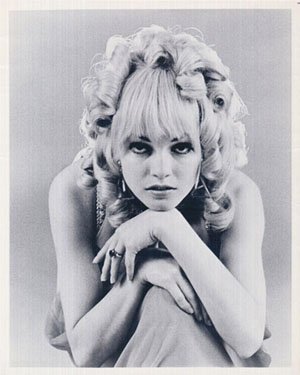Home of Wis-Myth. Just left of Sci-Fi looms Wisdom-Focused Modern Mythology
Click on hand to order novels.
Creative Discontent
October 5, 2004 - Updated May 22, 2009 and August 13, 2012
By Lily G. Stephen
Some time ago I read an article about Richard Avedon’s stroke, hospitalization, and passing. The famous portrait and fashion photographer had a stroke at age 81 while he was on assignment for The New Yorker.
The news provoked a reflection on one step taken from the egocentric path toward the spiritual path; it sent me time-traveling back to 1968, when I was focused in photographic modeling and assisting my first husband with his commercial art studio. Back then, even though I knew that Avedon photographed an array of beauties, I associated his name with Jean Shrimpton’s. The Shrimp was my idol. Hers was the face that captivated me, especially in an Avedon photo that appeared in one of the magazines I scanned at the time—it may have been Vogue, or even Seventeen.
I studied that photograph in detail, especially with an eye for the drama created with Avedon’s backlighting technique. His model seemed to have magically appeared in the midst of light. How I wanted a picture like that for my portfolio. I showed it to Bill Wolfhagen—photographer, friend, and my husband’s studio mate. In his Scandanavian accent Bill said, “Let’s do it.” We teamed up to produce our own version of Avedon’s vision.
The night before, I labored to curl a platinum wig, take a few stitches in a borrowed dress, and rehearse the makeup.
We ended up with a portfolio photo that was my favorite. Only now, at the passing of Richard Avedon, does the picture take on quite a different meaning of personal significance. The result of our work wasn’t a picture of me. It was a consciously contrived illusion. It was a visual metaphor for what we do every day in this earthly existence. The recollection of that year, 1968, now inevitably links the photograph with J. Krishnamurti’s writings, because it was also during that year when my attention was arrested by Krishnamurti’s face and voice on the TV screen. I set tasks aside to sit, to listen to him. I had joined the ranks of wisdom seekers.
That was the start of my immersion in Krishnamurti’s talks—the teacher who advocated creative discontent; who said, “You can see that everything about you is decaying, being destroyed. This so-called civilization is no longer being held together by the collective will; it is going to pieces.” Excellent reminder for me, that one day good cheekbones will be a small vial of ash.
Further, he said: “The man who really wants to find out whether or not there is a state beyond the framework of time, must be free of civilization; that is, he must be free of the collective will and stand alone. And this is an essential part of education: to learn to stand alone so that you are not caught either in the will of the many or in the will of one, and are therefore capable of discovering for yourself what is true.”
For one such as I who had been caught in the will of a strict religious group for her first twenty-one years, those were liberating words. So I salute Richard Avedon at the time of his passing, an artist with idiosyncratic vision. Avedon coupled his vital interest in his subjects with a talent for being right in the moment, transcending the stamp of time. In a sense, he practiced through his work what was advocated by the teacher to whom I'd been drawn. How better to honor his journey to the other side and the time-travel it has inspired than with Krishnamurti’s words: “Real revolt, true revolution is to break away from the pattern and to inquire outside of it.”

Photograph of Lily by Vilhelm Wolfhagen.
Photograph of Jiddu Krishnamurti from Wikimedia Commons.
Quotations from Think on These Things, J. Krishnamurti, Perennial Library edition by Harper & Row, 1970, pp. 52, 98.
All images and written/spoken material are protected under copyright by Blooming Rose Press. No material may be reproduced without written permission.
Click on "Contact us" for permission.
